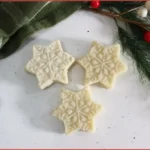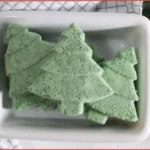Using essential oils topically is a simple way to experience aromatherapy through both scent and touch.
From a refreshing dab on the wrist or a gentle rub on temples, to a relaxing massage oil, topical application turns essential oils into a hands-on ritual of calm, comfort, and connection.
Diluting essential oils in carrier oils is the single most important safety aspect of using essential oils topically.
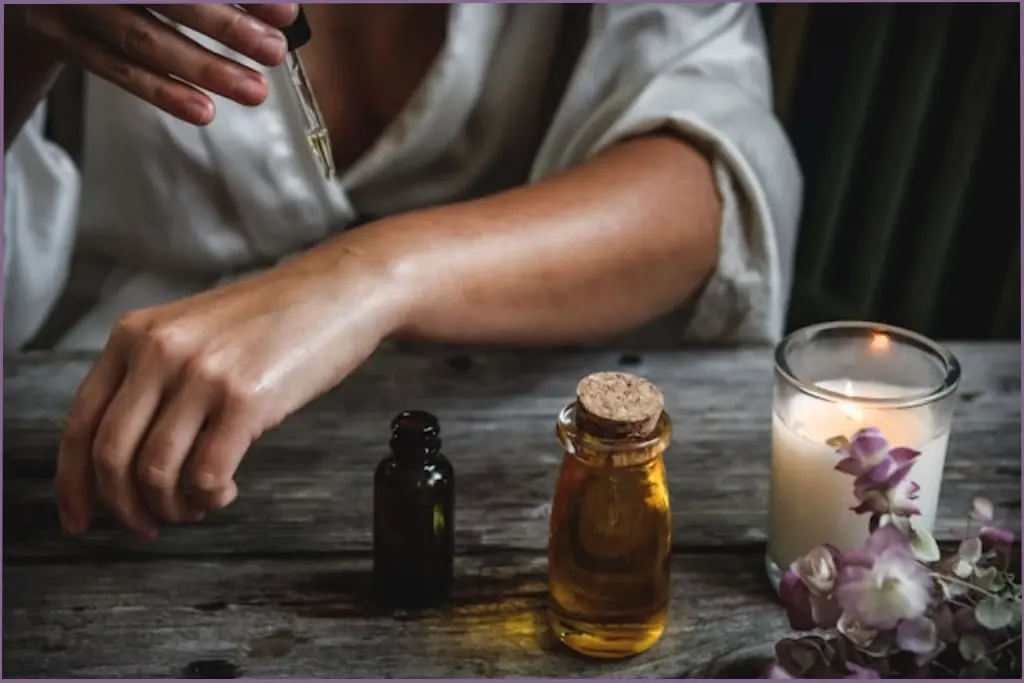
✨ Get 12 Free Holiday Diffuser Blends — Printable PDF
Instantly make your home smell like Christmas with these festive, ready-to-use recipes.
In this guide, you’ll learn how to blend essential oils with nourishing carrier oils and how to apply them to the skin safely.
You’ll also find easy tips to incorporate topical application into simple, sensory-rich moments throughout your day.
Table of Contents
Affiliate Disclosure: Some links on this site are affiliate links. I may earn a small commission if you purchase through them, at no extra cost to you. See the full affiliate disclosure.
Benefits Of Using Essential Oils Topically
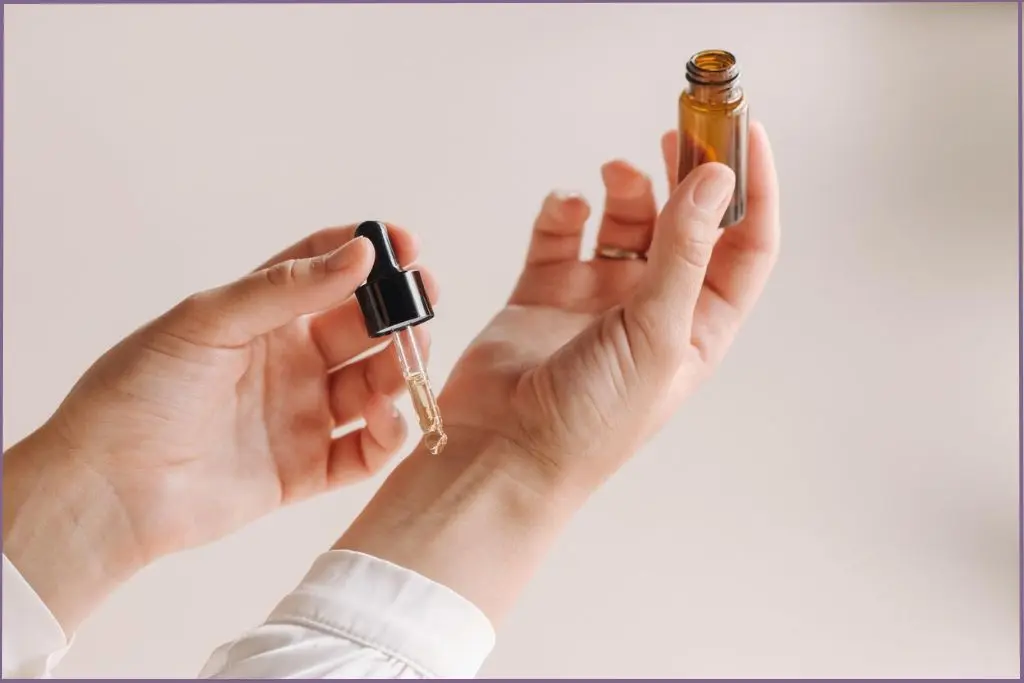
What makes topical application appealing is that it allows you to target specific areas for aromatic and cosmetic use. The effects will vary depending on the oil you use and how you use it.
This differs from the way essential oils work when diffused. Inhalation offers broad aromatic benefits, while topical use adds a tactile, localized element to your self-care ritual.
Because essential oils have a low molecular weight, they can be absorbed through the skin when diluted properly, allowing you to experience their scent up close and for longer periods.
Depending on the essential oil, topical use can support a variety of self-care goals:
Create a sense of calm by applying relaxing essential oils to pulse points such as your wrists or temples.
Incorporate into a relaxing massage for areas such as the shoulders or feet as part of an end-of-day wind-down.
Support outdoor comfort with essential oils that are commonly used in natural skin care blends.
Enjoy the personal aroma of a favorite essential oil by dabbing a diluted blend on the neck or collarbone.
Once you begin using essential oils topically, you’ll notice how this technique enhances your overall aromatherapy experience.
Topical Essential Oil Ideas for Everyday Use

Applying essential oils to the skin can be a soothing and sensory-rich part of your daily self-care rituals, allowing you to enjoy their aromatic properties in a targeted, hands-on way.
Topical application of essential oils is especially helpful when you want to focus on a specific area. Apply to your temples for a calming ritual, wrists for a midday refresh, or feet after a long day.
Here are a few simple and enjoyable ways to use essential oils topically in your day-to-day self-care routine:
Create a Calming Ritual
Apply diluted lavender, cedarwood, or Roman chamomile essential oils to your pulse points – wrists, temples, or behind your ears – to help create a moment of calm during stressful days or before bedtime.
The gentle aroma of these oils combined with the sense of touch can help you pause and reset during a busy day.
Take a few deep breaths while applying the oil to turn this into a quick mindfulness break.
Ease Into the Evening
Massage a soothing oil blend into your neck, shoulders, or chest as part of your nighttime routine. The combination of gentle touch and a comforting aroma can help your body shift into rest mode.
Lavender, sandalwood, and Roman chamomile are the best essential oils for this purpose.
Enhance Morning Focus
Start your day with a quick topical application of energizing oils like rosemary or peppermint on the back of your neck or collarbone. It’s a refreshing way to engage your senses and feel more alert.
The crisp, refreshing aroma of these essential oils can help set the tone for a productive morning.
Support Outdoor Skin Comfort
After time spent outdoors, applying a skin-friendly blend of lavender or tea tree oil (properly diluted) to exposed areas can help your skin feel cared for and refreshed.
Soothe Tired Feet
After being on your feet for long hours, try massaging a blend of peppermint oil and carrier oil into your calves and soles. This cool, tingly effect can be a treat after travel or workouts, adding a sense of lightness to tired feet.
Create Your Signature Scent
Mix your favorite essential oils into a skin-safe roller blend and apply it like perfume to your wrists and décolletage. Oils like rose, patchouli, vanilla, and sandalwood work beautifully for custom body scents.
Tip: Always patch test any new blend and follow dilution guidelines for safe use.
Note: The effectiveness of essential oils varies between individuals, and research is ongoing. Always consult a healthcare provider before use, especially if you have any concerns or health conditions.
Importance Of Diluting Essential Oils With Carrier Oils For Topical Application

When using essential oils topically, safety should be your topmost priority, and that starts with proper dilution.
Essential oils are highly concentrated plant extracts. Applying them directly to the skin without dilution can lead to irritation or sensitivity. A carrier oil helps disperse the essential oil evenly, making it gentler on the skin.
In addition to improving safety, carrier oils help essential oils stay on the skin longer and make it easier to cover a larger area.
Popular carrier oils include jojoba, sweet almond, grapeseed, and coconut oil, each offering unique skin-friendly qualities. For example, jojoba oil is lightweight and ideal for oily skin, while coconut oil is deeply moisturizing and better suited for dry skin.
Choosing the right carrier oil depends on your skin type and personal preference. For more guidance, explore this article on the best carrier oils for essential oils.
How To Dilute Essential Oils For Skin + Dilution Ratios
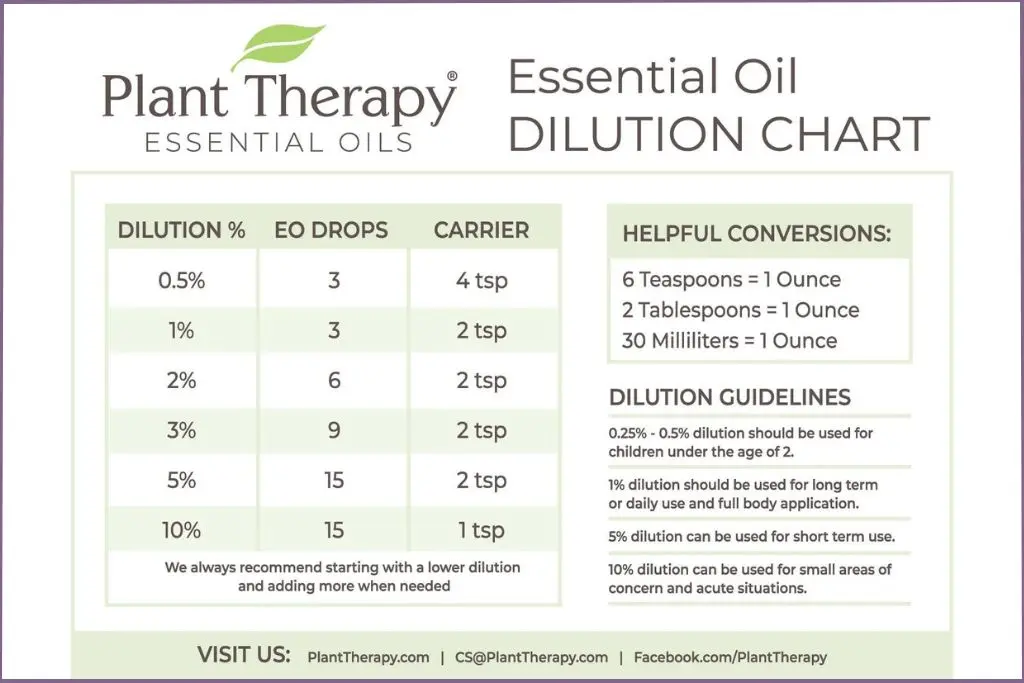
There are two ways to dilute essential oils for the skin:
1- If it’s for one-time use or occasional application, blend only one drop of essential oil with the recommended quantity of carrier oil.
2- If it’s for regular use, blend a slightly larger quantity and store it in a dark-colored glass bottle. Do not blend large quantities at a time, as opening the bottle regularly exposes the essential oil component to light and air, degrading its therapeutic properties.
These are some recommended dilution ratios based on age and specific circumstances:
- 0.5% dilution: Suitable for babies aged 3-24 months
- 1% dilution: Recommended for children aged 2-6 years
- 2% dilution: Safe for adults, older children, and elderly individuals
- 3%-5% dilution: For temporary use and specific needs
Tip: Always start with the lowest dilution and adjust if needed.
Plant Therapy’s Essential Oils Dilution Chart Magnet is the most convenient dilution chart available. It’s easy to read, easy to understand, and the guidelines are simple to follow.
Best of all, it comes with a magnetic backing. No matter where you are, the magnetic backing keeps this Essential Oils Dilution Chart right where you need it.
Always use a dropper when adding essential oils so you don’t accidentally add too much.
It’s always better to start with a lower dilution and gradually increase if needed.
This guide to diluting essential oils goes more in-depth into this topic, complete with ratios, charts, and more.
Quality Matters When Buying Essential Oils for Topical Use
When applying essential oils to your skin, choosing a high-quality product makes all the difference. Here’s what to look for when evaluating essential oil brands:
Here are some key factors to consider:
Purity: Look for oils that are 100% pure, with no added fillers, synthetic ingredients, or adulterants. Reputable brands often provide GC/MS test results (third-party chemical analysis) to confirm purity and authenticity.
Botanical Source: The label should clearly list the botanical name (e.g., Lavandula angustifolia for true lavender), along with the plant’s origin. Knowing the exact species ensures you’re getting the right oil for your intended use, as properties can vary between varieties.

Distillation Method: The method used to extract the oil affects its quality. Look for steam-distilled or cold-pressed oils, depending on the plant. These gentle methods help retain the oil’s natural aromatic compounds without using harsh solvents.
Organic Certification: While not mandatory, certified organic oils are typically sourced from plants grown without synthetic pesticides or fertilizers. It’s a helpful indicator of cleaner farming and sourcing practices.
When you’re applying essential oils directly to your skin, transparency and sourcing matter. One brand that consistently meets these standards is Plant Therapy, which is why it’s my top recommended brand for both beginners and experienced users.
Read my detailed Plant Therapy essential oils brand review.
Prioritizing these factors ensures that you are buying safe and effective essential oils for topical use. Remember, a reputable brand will be transparent about these aspects and readily provide information about their products on their website.
Precautions When Using Essential Oils Topically
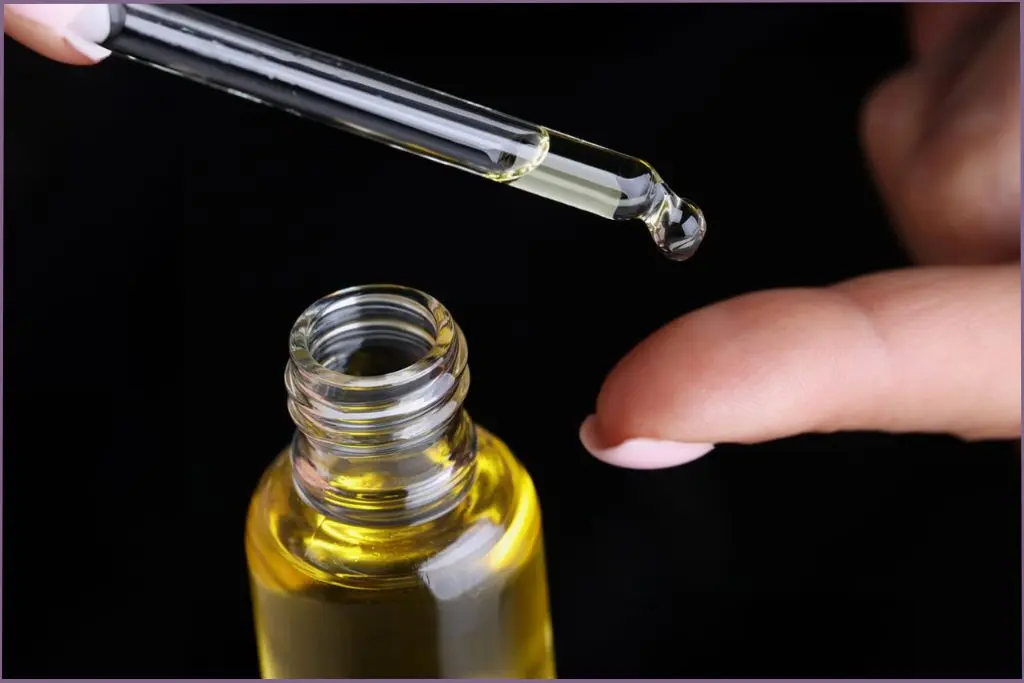
Using essential oils on your skin can be enjoyable and rewarding, but it’s important to follow some basic precautions to ensure a safe and positive experience:
Patch Test New Oils: When using an essential oil topically for the first time, you must test a diluted drop of essential oil on a small area of skin (like your inner forearm) and wait 24 hours. This helps check for any personal sensitivity or irritation.
Be Aware of Citrus Oils and Sun Sensitivity: Citrus essential oils such as lemon, bergamot, and grapefruit may increase your skin’s sensitivity to sunlight. Avoid going out in the sun immediately after applying any skincare product with these oils. If you have to go out, apply only to skin covered by clothing.
Avoid use on Broken or Irritated Skin: Never apply essential oils to open wounds, rashes, or sunburnt areas. Let the skin heal before applying any essential oil blends.
Use Kid-Safe Oils for Children: Not all essential oils are safe for kids. Stick to oils labeled “kid-safe” and always follow age-appropriate dilution guidelines. Avoid using essential oils on babies unless recommended by a pediatric professional.
Use Extra Caution for Facial Applications: The skin on your face is more delicate and calls for extra caution. It’s better to err on the side of safety and use a lighter dilution with fewer drops of essential. As an extra precautionary measure, perform a patch test on a small area before applying to facial areas.
Use Extra Caution When Using “Hot” Oils: Oils like oregano, cinnamon bark, and clove are naturally more intense and may cause skin irritation if not heavily diluted. Use with caution and never apply undiluted.
Be Aware of Allergies: If you’re allergic to a specific plant or nut, avoid using the essential oil or carrier oil extracted from that plant. Roman chamomile and sweet almond are two oils that commonly trigger allergic reactions.
Avoid Use if Pregnant or Breastfeeding: There’s conflicting advice about this aspect. It’s best to be extra cautious and avoid using essential oils completely during pregnancy or while breastfeeding.
Store Essential Oils Correctly: Essential oils can degrade over time. Store them in tightly sealed dark glass bottles, away from heat and direct sunlight, to maintain their potency and shelf life. Read my complete guide on how to store essential oils.
Best Essential Oils For Topical Application + Creative Ways To Use Them
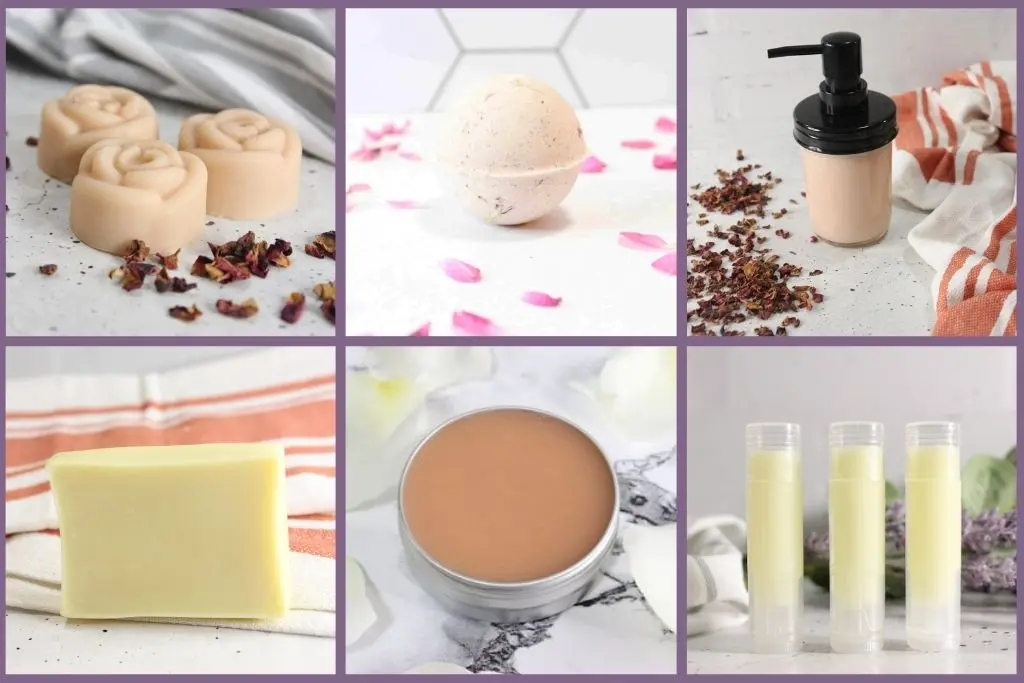
Looking to build your skincare or self-care routine? These popular essential oils are often used in DIY blends for their pleasant aromas and wellness-enhancing properties:
Rose
This precious oil is cherished for its ability to soothe and hydrate the skin. Its deeply floral scent adds a luxurious touch to face creams and serums.
→ Use it in this DIY Rose Face Lotion for Radiant Skin
Lavender
Lavender essential oil is a go-to for all-round use. Its gentle, floral aroma makes it ideal for calming evening routines, and it’s often included in massage blends, facial oils, or after-sun lotions.
→ Try this DIY lavender face mask.
Frankincense
Often included in face oils or serums for mature skin, this oil has a grounding scent that pairs well with meditation or skincare routines.
→ Try this DIY Face Oil with Frankincense and Rosehip
Helichrysum
Widely known as “immortelle,” helichrysum essential oil is popular in anti-aging facial blends for its skin-rejuvenating qualities. It pairs well with rosehip or jojoba carrier oil in homemade skincare preparations.
→ Consider adding a DIY Helichrysum Facial Oil recipe
Ylang Ylang
Known for its exotic floral fragrance, ylang ylang oil helps balance oily skin and adds a romantic aroma to massage blends.
→ Try it in this DIY Ylang Ylang Body Oil Blend
Neroli
Gentle and aromatic, neroli is loved for mature or sensitive skin and is often used in toners and hydrating sprays.
→ Could be linked to a future DIY Neroli Facial Mist if you’d like to create one.
Tea Tree
Known for its clarifying properties, tea tree oil is often added to homemade toners or roll-ons for oily or combination skin.
→ Check out this Tea Tree Oil Roll-On for Skin Support
Roman Chamomile
This gentle, floral-scented oil is popular in bedtime balms and baby-safe blends (with proper dilution).
→ Use it to create a homemade chamomile and lavender pillow spray.
Peppermint
With its cool, minty scent, peppermint essential oil is a favorite in cooling face mist sprays and soothing foot soaks. Its refreshing aroma can perk up your senses when used in the shower and add a tingly sensation when used (properly diluted) to soak tired feet.
→ Explore more ideas for using peppermint essential oil topically to boost mood and elevate personal care.
Geranium
Loved for its floral aroma, geranium oil is commonly used in body oils and scrubs for a skin-balancing touch.
→ Add geranium to this hibiscus sugar scrub recipe for glowing skin and a soothing scent.
Clary Sage
Often used in calming massage oils, clary sage has a herbaceous scent and is a lovely addition to self-care blends.
→ Use it in this Clary Sage Massage Oil for Relaxation
Get more ideas for creative ways to use essential oils topically in your skincare routine.
Whether you’re creating a signature perfume, enhancing a massage, or experimenting with body oils, using essential oils topically offers interesting DIY potential.
Remember: When using essential oils topically, always dilute properly and use with care. Research each essential oil and its specific uses, as some oils may require additional precautions or have specific contraindications.
